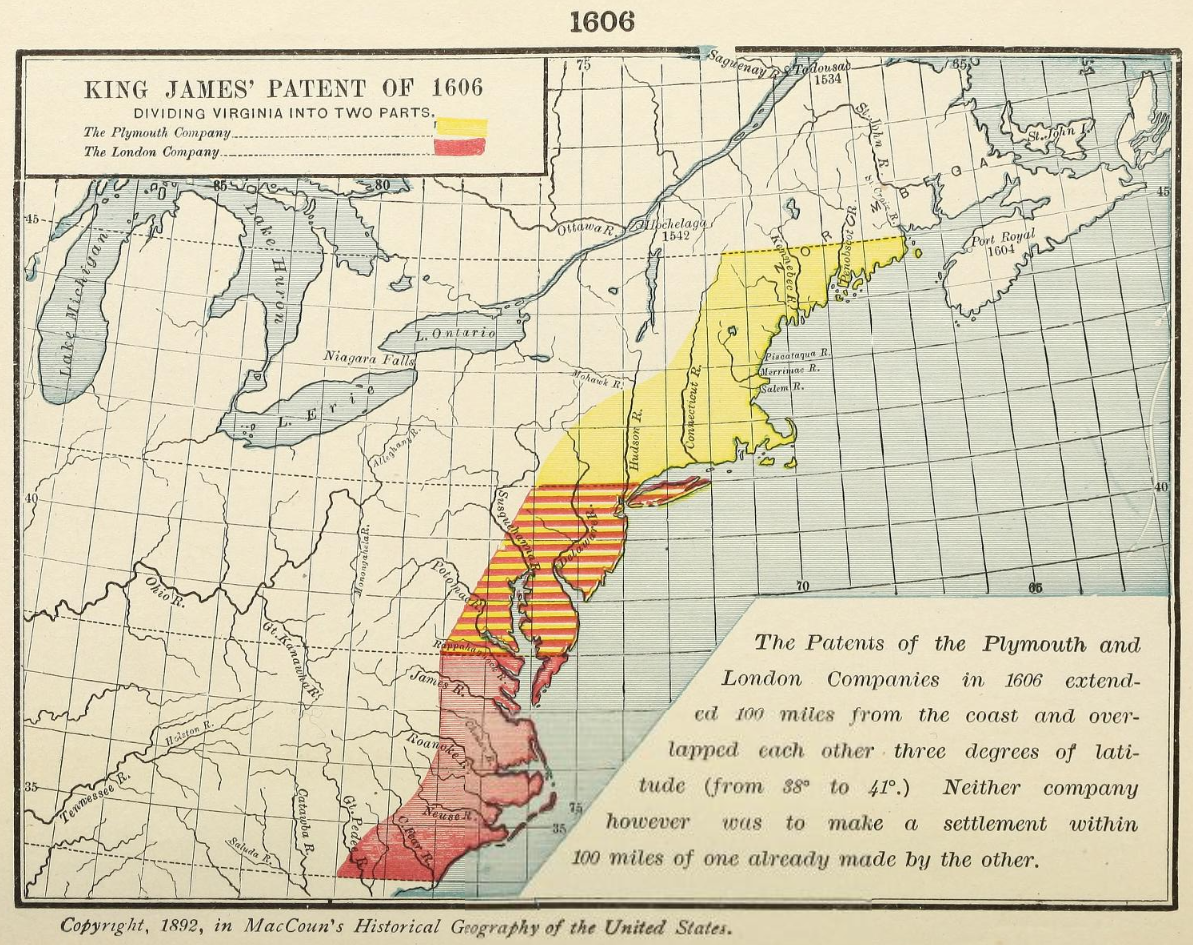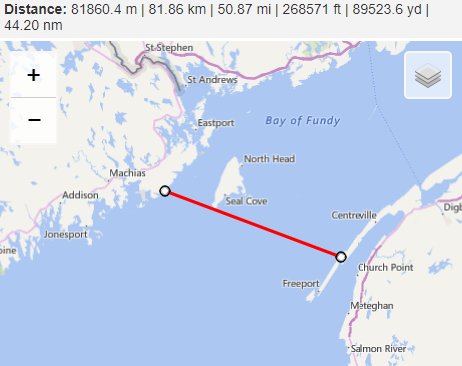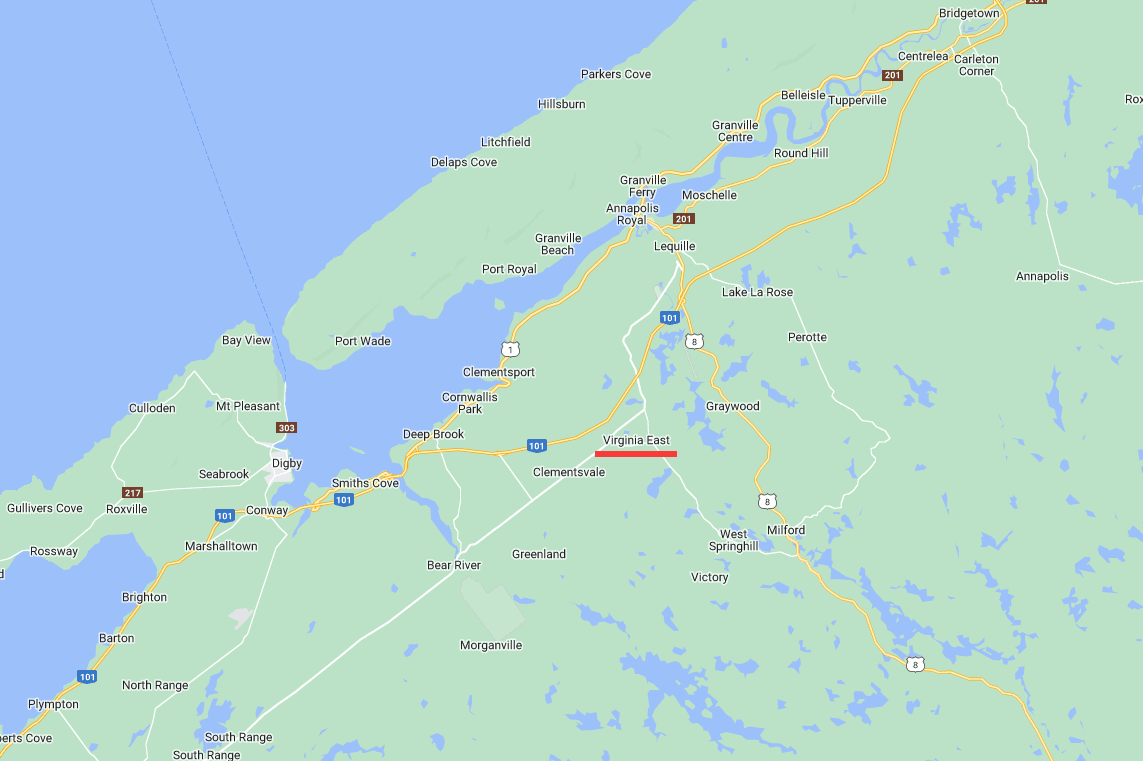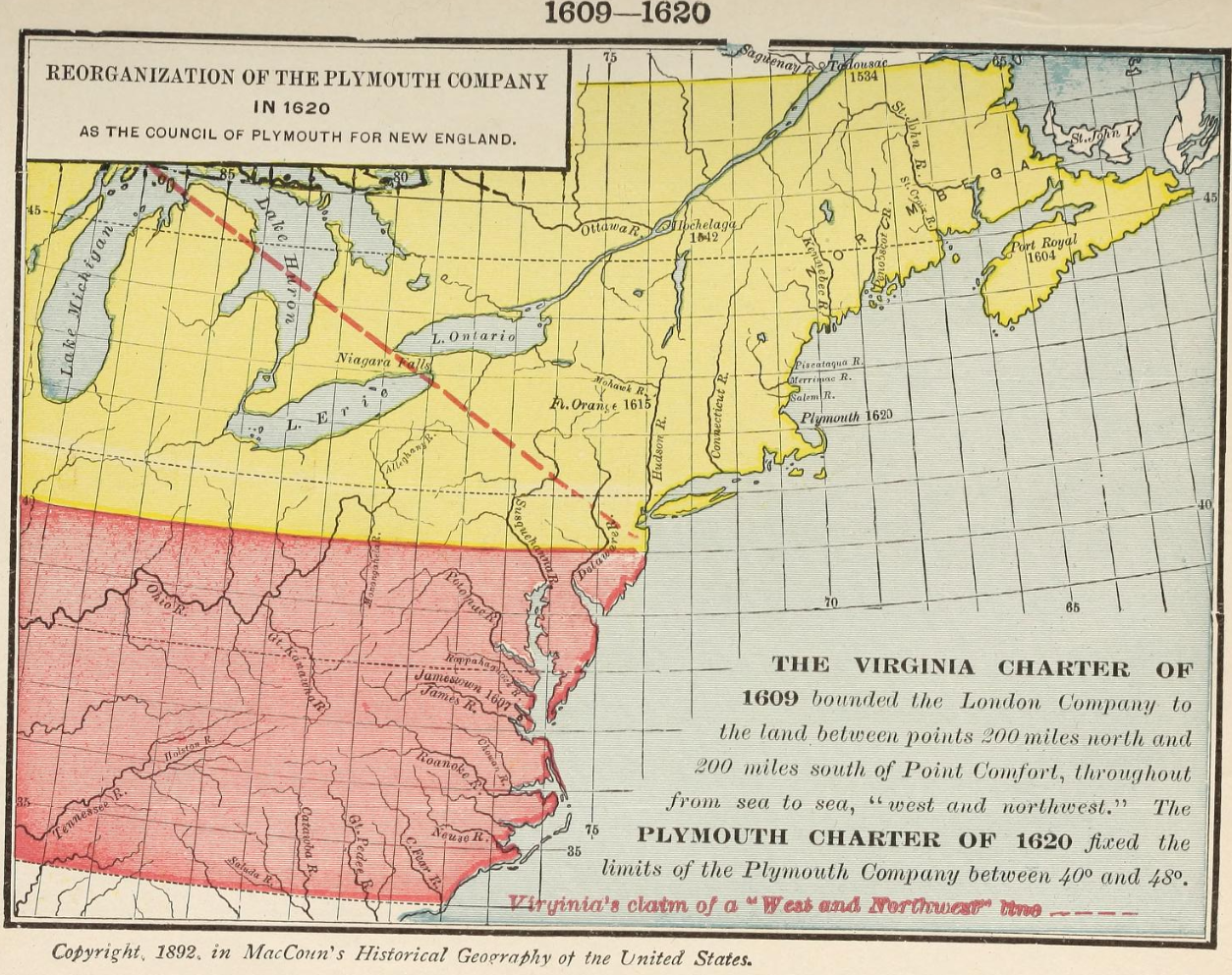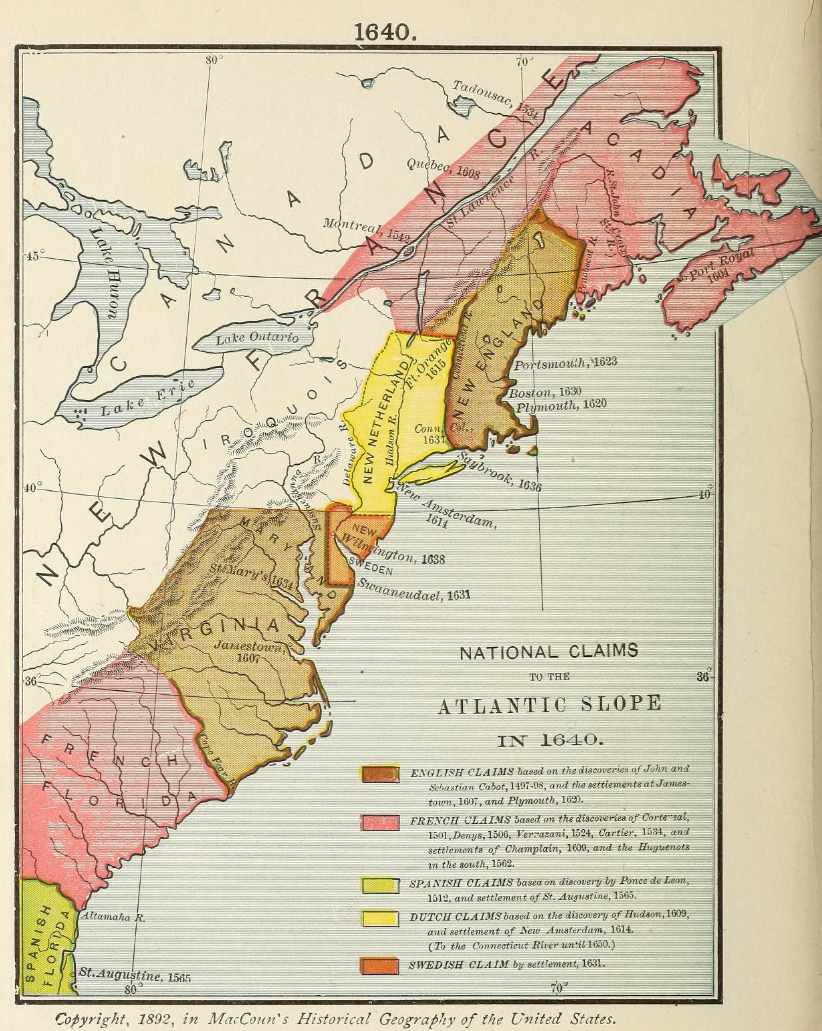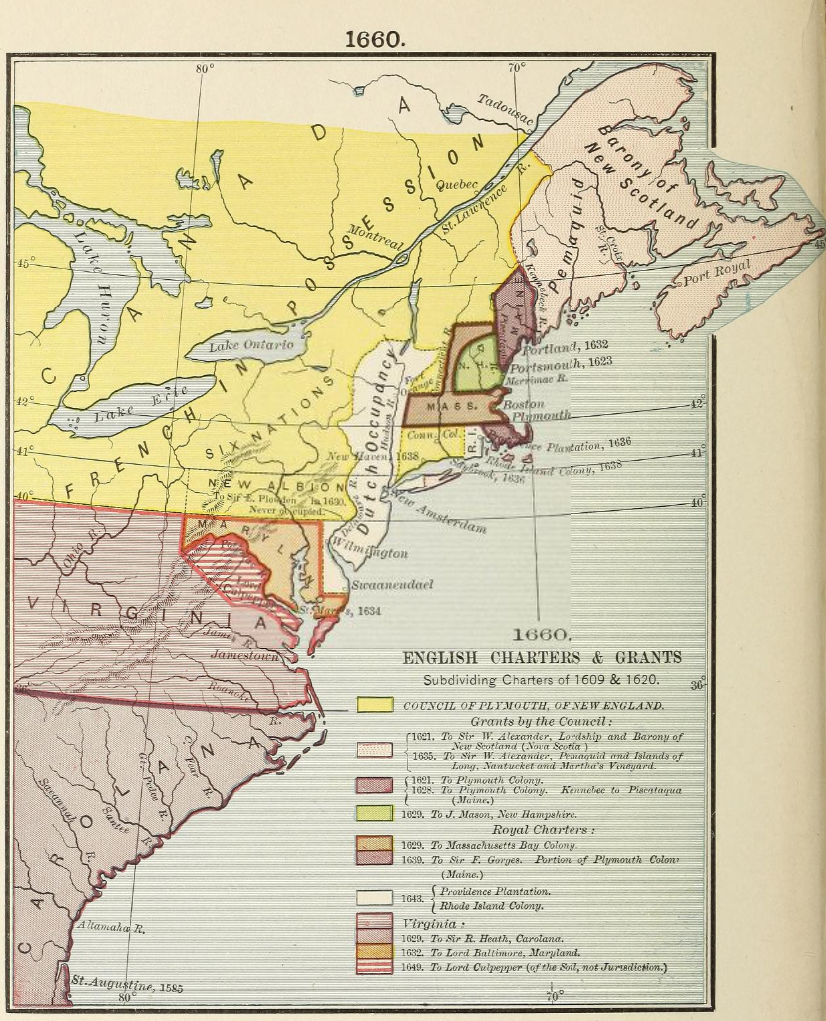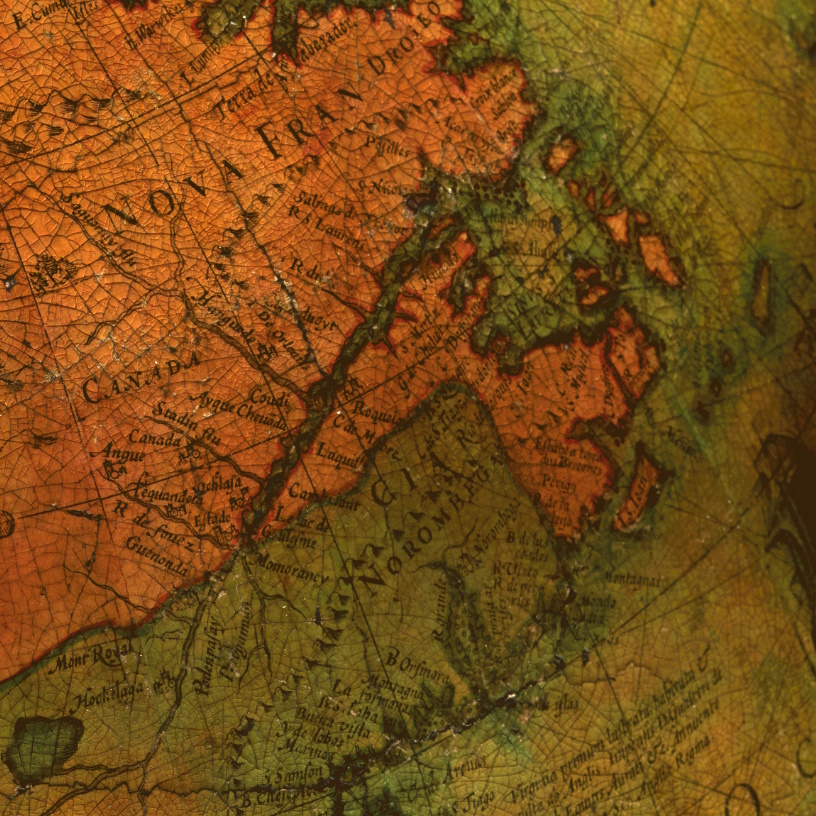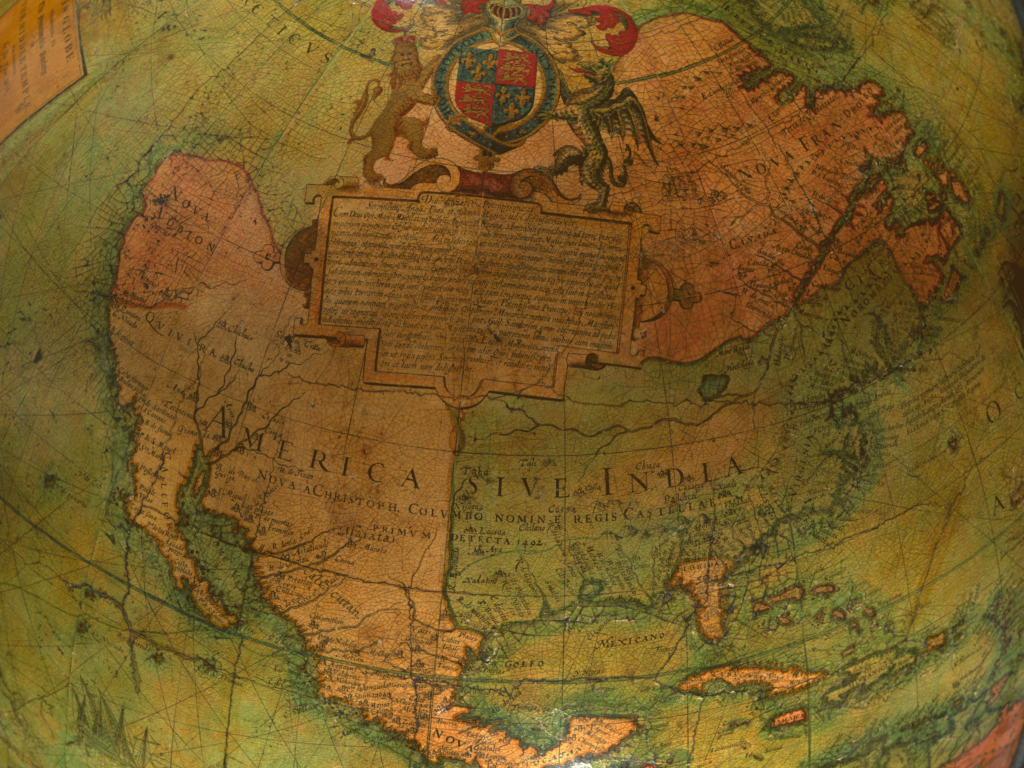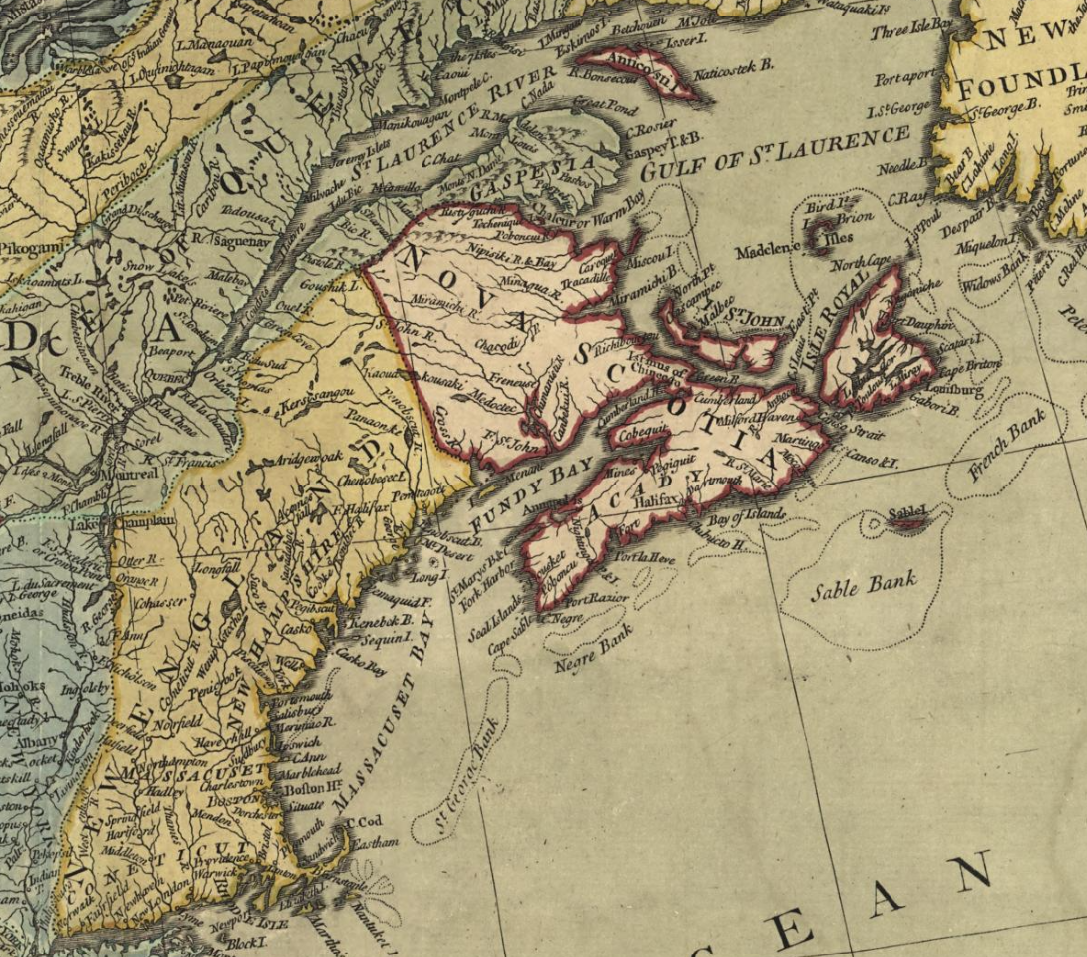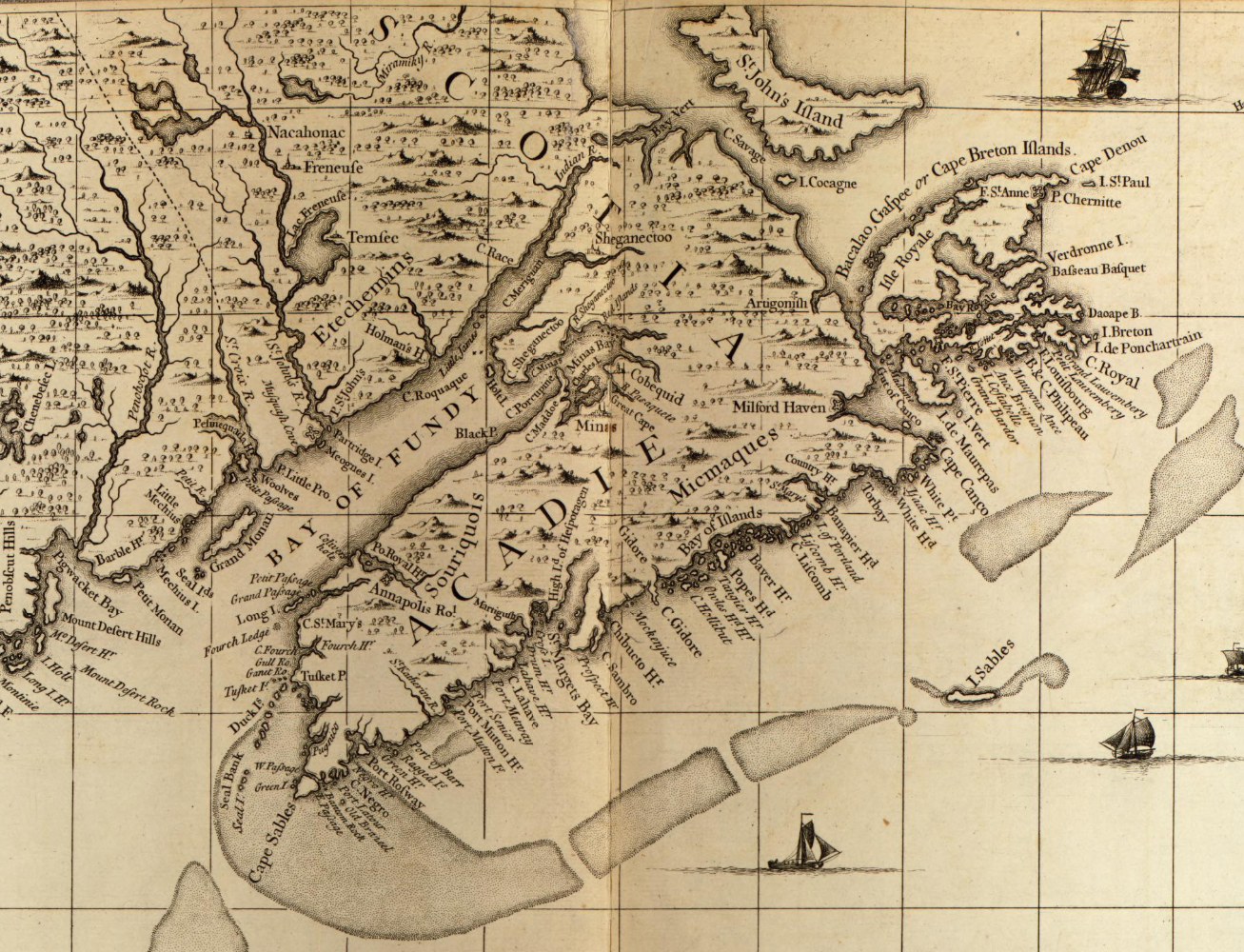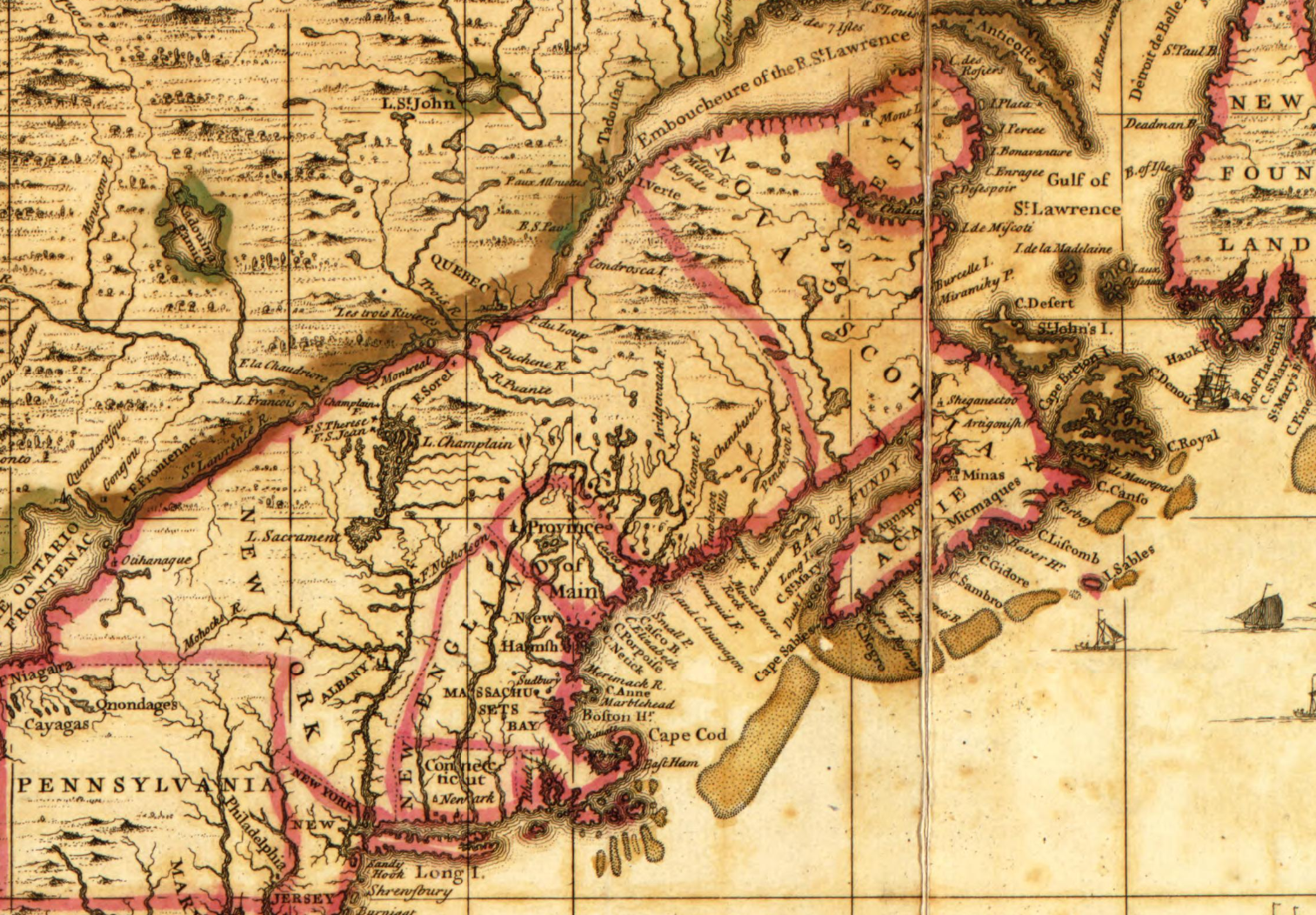1620:

1643:

1692:

1776:

“1524: Smitten by the common passion of the sovereigns of Europe, for American discovery, Francis I. of France turned aside alike from his elegant and his warlike pursuits, and one year before his defeat at Pavia, he found for his service another Italian discoverer. This was John Verrazani, a Florentine, who reached the continent in the latitude of Wilmington, North Carolina. He then sailed fifty leagues south, but finding no convenient harbor, he returned and cast anchor; being the first European who had afforded the astonished natives the spectacle of the white race. They were received with rude, but fearless hospitality. The color of the Indians, the French compared to that of the Saracens. They looked with wonder upon their wild costume, made of the skins of animals, and set off by necklaces of coral and garlands of feathers. As they again sailed northward along the coast, their senses were regaled by the verdure of the forests, and the perfume of the flowers which they scented from the shores.
At a fine harbor, supposed to be that of Newport in Rhode Island, Verrazani remained fifteen days, and there found “the goodliest people he had seen.” From thence he followed the north-eastern shore of New England, finding the inhabitants jealous and hostile. From the peninsula of Nova Scotia, he returned to France, and wrote a narrative of his voyage, which is the earliest original account of the coast of the United States.”
“1692: In none of the colonies did the Revolution in England produce a greater change than in Massachusetts. In 1692, king William, who had refused to restore its former government, granted a new charter, which, extending its limits, but restricting its privileges, commenced a new era in the history of this colony. Massachusetts now embraced, besides the former territory, Plymouth, Maine, and Nova Scotia; extending north to the river St. Lawrence, and west to the South Sea, excepting New Hampshire and New York; and including, also, Nantucket, Martha’s Vineyard, and the Elizabeth islands. Almost the only privilege which the new charter allowed the people, was that of choosing their representatives. The king reserved to himself the right of appointing the governor, lieutenant governor, and secretary; and of repealing all laws within three years after their passage.”
“1755: General Braddock was to attack Fort du Quesne ; Gov. Shirley was to lead the American regulars and Indians against Niagara; the militia of the northern colonies were to be directed against Crown Point; and Nova Scotia was to be invaded.
Early in the spring, the French sent out a powerful fleet, carrying a large body of troops, under the Baron Dieskau, to reinforce the army in Canada.
For the expedition against Nova Scotia, three thousand men, under generals Monckton and Winslow, sailed from Boston on the 20th of May. They arrived at Chignecto, on the Bay of Fundy, the first of June. Here they were joined by 300 British troops, and proceeding against BeauSejour, now the principal post of the French in that country, invested and took possession of it, after a bombardment of five days. The fleet appearing in the river St. Johns, the French set fire to their works, and evacuated the country. Thus, with the loss of only three men, the English found themselves in possession of the whole of Nova Scotia.
Col. Washington, on his return from the Great Meadows, had public thanks voted him by the house of burgesses. He rejoined his regiment at Alexandria, and was ordered by the governor to fill up his companies by enlistments — go back immediately — conquer the French, and build a fort beyond the mountains. He wrote to a member of the council, showing the folly and impracticability of the scheme; and it was given up.”
“1756: The campaign of 1756 had been, during the preceding autumn, provided for by the colonists ; but the bad arrangements of the British cabinet palsied their efforts. Although Shirley had been appointed by the crown, commander-in-chief of the forces, yet Winslow, in consequence of his success in Nova Scotia, had the confidence of the people, without which troops could not be raised. The generous Shirley ceded his claim, and the unfinished plans of the preceding campaign were to be again attempted.”
Willard, Emma. History of the United States, or Republic of America. [ New York, Barnes, 1847] Retrieved from the Library of Congress, https://archive.org/details/historyofuniteds00willuoft/

